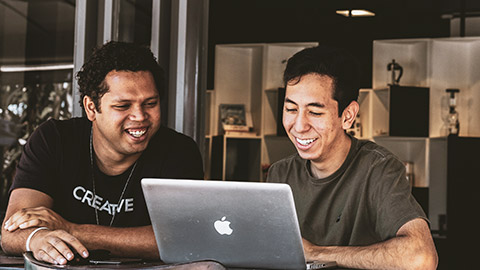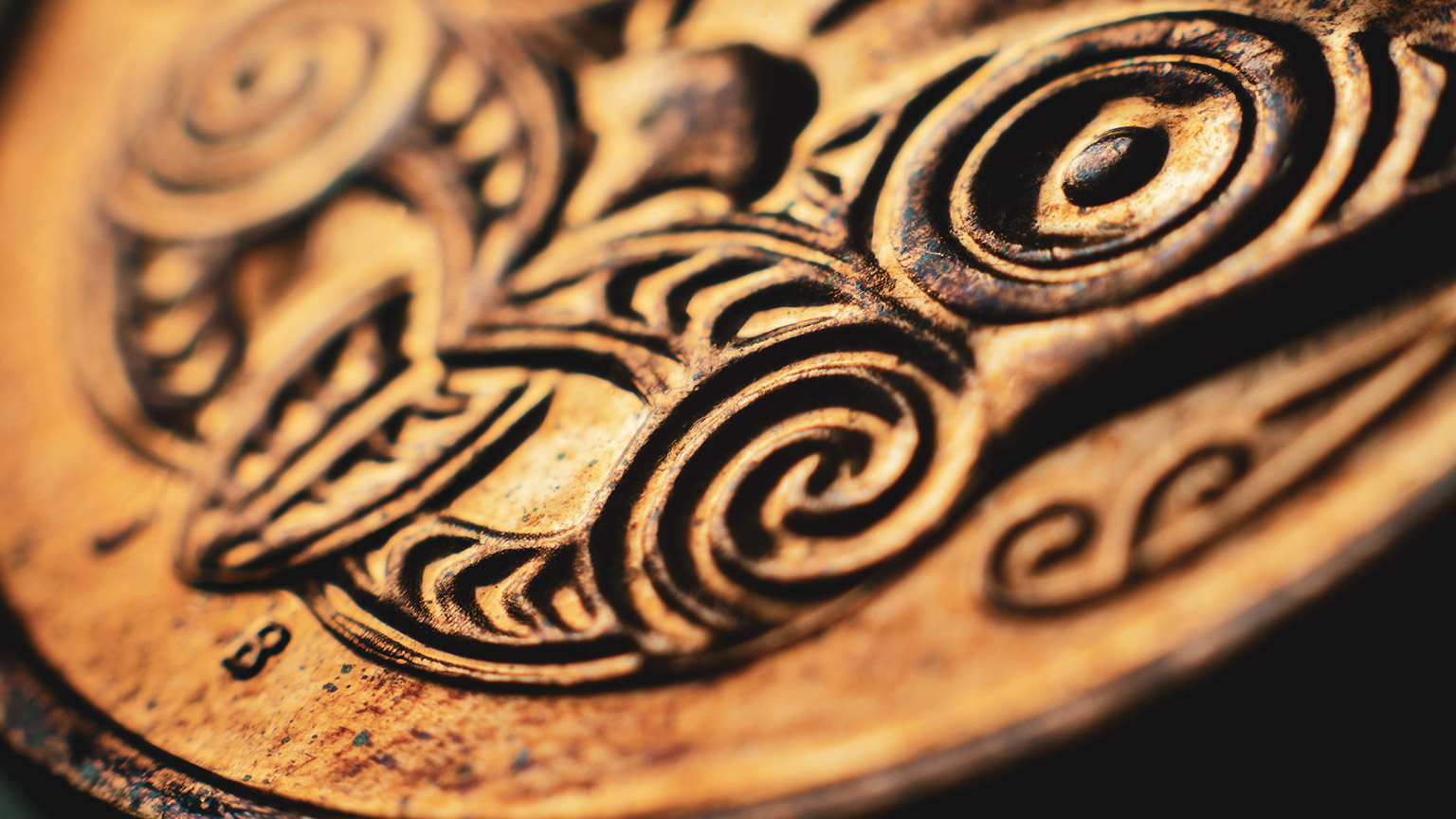Simply put, ‘mātauranga Māori’ means ‘Māori knowledge’ – but this fails to convey the width and breadth of the term. Māori scholar Hirini Moko Mead (2016) states that it1:
... encompasses all branches of Māori knowledge, past, present and still developing. It is like a super subject because it includes a whole range of subjects familiar in our world today, such as philosophy, astronomy, mathematics, language, history, education and so on. And it will also include subjects we have not yet heard about. Mātauranga Māori has no ending.
Furthermore, he asserts that1:
Mātauranga Māori is not like an archive of information but rather is like a tool for thinking, organising information, considering the ethics of knowledge, the appropriateness of it all and informing [Māori] about [their] world, and [their] place in it.
So what we find is that mātauranga Māori encompasses the bodies of knowledge and understanding of te ao Māori (the ‘Māori world’) and its past, present and future. This also includes the ways in which colonisation had an impact on, and continues to have an impact on, iwi Māori. Mātauranga Māori provides ‘distinct Māori ways of exploring and conceptualising issues that face [hapū and iwi Māori]’.2
For youth workers, having an understanding of mātauranga Māori is essential to working effectively, sensitively and safely with rangatahi Māori, as well as with their whānau, hapū and iwi.
Aspects of mātauranga Māori
Mead asserts that there “are customary ideas, values, and notions of correctness and appropriateness associated with mātauranga Māori. More importantly, there is a tapu aspect to mātauranga Māori. The tapu aspect of mātauranga Māori ties it firmly into the system of beliefs and values of the Māori people.”1
In this topic you will be introduced to several aspects of mātauranga Māori that are important for youth work practice:
- tikanga and kawa
- te reo Māori
- whakapapa
- manaakitanga
If you are already familiar with tikanga and other concepts from mātauranga Māori – either from your upbringing or your prior education – then you may find that you already know a lot of what is covered in the first half of this topic.
Tikanga and kawa
Tikanga and kawa are two very important aspects of mātuaranga Māori. They are two separate constructs but are interrelated in many ways.
Kawa
For iwi Māori the concept of kawa is important for the maintenance of the fabric of the community and society at large. Kawa set the expectations for the process and behaviours that people should adhere to in any given situation. Evidence of the role of kawa can be clearly seen in the pōwhiri/pōhiri, in tangihanga or any significant events for members of the whānau, hapū and iwi.
Tikanga
The customary ideas, values, and notions of correctness and appropriateness are referred to as tikanga. It is entwined with mātauranga Māori.1 It is brought forward from the past into present based on the learning and experiences that have been handed down from generation to generation.
Tikanga is translated into the English language with a wide range of meanings – culture, custom, ethic, etiquette, fashion, formality, lore, manner, meaning, mechanism, method, protocol, style, customary law.
Hirini Moko Mead states that tikanga can be viewed from several perspectives. One view is that tikanga Māori 'controls interpersonal relationships' as it guides the interactions of meetings and provides identity to individuals. Another view is through ethics: that tikanga Māori is a practised code of conduct. The word tikanga is derived from the Māori word tika meaning 'right' or 'correct' so it follows that it involves moral judgements about what is the right way of doing something.
The principles upon which tikanga practices have been developed remain the same, but the expression of these is considerably different from traditional times. Based on logic and common sense associated with a Māori world view, tikanga evolves over time and in response to the influence of a developing world.
Tikanga can vary between iwi (tribe) and hapū (sub-tribe). For example, the way in which a hapū greets and welcomes its visitors may differ from another hapū’s. However, both will ensure that they meet their responsibilities of manaakitanga (hospitality), to host and care for their visitors.
Participating in a different culture (a culture that you were not raised in) takes time and patience. If you are unfamiliar with tikanga, learn as much as you can from as many sources as possible. Learning about tikanga will enrich your experiences with the culture and improve your ability to participate more fully.
Though interpretations of these matters can vary between different iwi, you could view the relationship between kawa and tikanga in the following way: Kawa is the policy, and tikanga is all the procedures on how the policy is realised. To put it simply, kawa is what we do, tikanga is how we do it.
While kawa does not change, the tikanga or practices are constantly evolving.
Explore further
To learn more about the interplay of tikanga and kawa in the modern world, you can listen to a recording of a panel discussion titled What Pākehā can learn from tikanga Māori (49:47) from the 2018 New Zealand Writers and Readers Festival. There is a short article on the RNZ website at the same link if you would rather read a written summary than listen to the podcast of the whole discussion.3
Te reo Māori
Te reo Māori, the Māori language, is the language of tangata whenua in Aotearoa New Zealand and is indigenous to our country. It is a Polynesian language, closely related to Cook Island Māori, Tahitian and Hawaiian. As one of the three official languages of New Zealand, te reo Māori is a part of our country's national character and identity.
Ko te reo te pūtake o te ao Māori – The Māori language is the foundation of the Māori world.
Over half of people identifying as Māori speak/understand te reo Māori, with a third stating they speak it fairly well. Of note is that those in the age range of 15–24 years identify as being most likely to speak te reo Māori at least fairly well.
Developing your skills in understanding and speaking te reo Māori is an important way you can show respect for rangatahi Māori and their whānau. An essential competency in ensuring successful outcomes when working with Māori is the ability to pronounce Māori words (including names of people and places) correctly. Conversely, the incorrect pronunciation of kupu Māori can put at risk successful outcomes when working with Māori.
For beginners, the best way to ensure that your pronunciation is correct is to access competent speakers of te reo Māori as role models. You need to be aware that there are minor variations (dialect differences) in the reo used in different parts of the country. The greatest variations you will find are in pronunciation and vocabulary; variations in grammar are relatively minor. For example, while the kupu ‘pōwhiri’ is widely used, you will find that in some parts of the country it is pronounced ‘pōhiri’.
There are many avenues for learning Te Reo Māori – it's a question of finding the option that suits you and putting aside time to regularly practise. Your local bookstore will have a selection of resources but there is also a range of fee-free resources available online, such as a series of lesson-episodes previously broadcast on Māori Television.
Whanaungatanga and whakapapa
There are many different interpretations and aspects of the concept of whānau. Literally, whānau means to give birth. Traditionally, whānau members share common descent, a shared whakapapa. In modern times, the word whānau is being adapted to describe groups with a common vision or kaupapa.
If we also consider the impact that Māori migration, Western colonisation and mass urbanisation has had on the whānau unit, it is no wonder that there have been stark changes to the concept of the typical whānau Māori. Yet whānau remains and survives. Within whānau, different members occupy different roles and responsibilities.
With the pressures of current society and burdens from a history of colonisation, many whānau do not function in the way that is required to support rangatahi. A whānau-centred approach to your practice is vital to promoting the well-being of rangatahi.
Manaakitanga
Manaakitanga is about values of integrity, trust, sincerity and equity. Literally, manaakitanga means to “care for a person’s mana” (well-being, in a holistic sense). It is the foundation for cultivating relationships based on kindness, aroha and empowerment – relationships which strengthen the body and soul, and which are the backbone of strong community networks.
The website of the Independent Māori Statutory Board defines it as4:
Manaakitanga is a powerful way of expressing how Māori communities care about each other’s wellbeing, nurture relationships, and engage with one another. Manaakitanga also extends to the whenua that needs care in order to ensure sustainability for future generations. The value of Manaakitanga is often expressed through the responsibility to provide hospitality and protection. Manaakitanga derives from two words – ‘mana’ and ‘aki’. Mana is a condition that holds everything in the highest regard. Aki means to uphold or support. Extending Manaakitanga requires respect, humility, kindness and honesty.
When working with rangatahi, manaakitanga “creates accountability for those who care for young people, relationally or systemically. When we uphold and extend manaakitanga from a distance, safeguarding collective wellbeing includes adequate resources and training for people who work with young people. Young people who experience strong manaaki have a safe and empowering space, and feel accepted, included and valued.”5
Manaakitanga can be expressed in many ways. It recognises, respects, cares for, trusts, shares, encourages; it is supportive, safe, challenging as appropriate; it contributes to mauri ora and positive change with those whānau/clients we work with. It can be as simple as offering refreshments, providing an environment for youth that feels safe to them, or using karakia and waiata in practice.
Explore further
Here are some books and resources on mātauranga Māori and aspects of tikanga you might be interested in.
- Tikanga Whakaaro: Key concepts in Māori culture written by Cleve Barlow (1991) – Laid out like an encyclopaedia but written in a very readable style, this book provides bilingual explanations of 70 terms that are significant in Māori culture.6
- Te Ao Hurihuri: Aspects of Māoritanga, edited by Michael King (1992) – Edited by the esteemed Pākehā historian Michael King, each chapter in the book is written by a Māori author discussing an aspect of the Māori world/society from their point of view, including aspects of tikanga.7

What is a theory?
A theory is a system of explanations that ties together a whole bunch of facts. They are general explanations that are supported by evidence obtained through the scientific method. A theory may explain human behavior, for example, by describing how humans interact or how humans react to certain stimuli. It not only explains those facts but can also help to predict what might happen if you act in a certain way or not. Theory provides concepts to name what we observe and to explain relationships between concepts. Theory allows us to explain what we see and to figure out how to bring about change. Theory is a tool that enables us to identify a problem and to plan a means for altering the situation.
What is a practice model?
Practice models, or models of practice describe how social workers can implement theories. Practice models provide social workers with a blueprint of how to help others based on the underlying social work theory. While a theory explains why something happens, a practice model shows how to use a theory to create change.
There are several theories and practice models that you have already been introduced to (or will be introduced to) in this programme. In this topic we will address several Māori theories and models that can be used to inform your youth work practice when working with rangatahi Māori.
It is important, however, to not assume that the principles and practices introduced here are relevant only when working with Māori, but rather think of these ideas and practices as beneficial for everyone.
Kaupapa Māori theory
In the report for their Te Taonga o Taku Ngākau research project, Pihema, Simmonds and Waitoki state2:
The underlying principle of Kaupapa Māori is that there are distinct Māori ways of exploring and conceptualising issues that face us as Māori people.
The theory arose out of a need to develop a theoretical approach to research that is Māori-centred, has transformative intent, and has at its core “the validation and affirmation of te reo Māori and tikanga”. It is grounded in te reo, tikanga and mātauranga Māori.
Kaupapa Māori intiatives have six critical core principles that should inform one’s approach and practice:
- Tino rangatiratanga (the self-determination principle)
- Taonga tuku iho (the ‘cultural aspirations’ principle)
- Ako Māori (the ‘culturally preferred pedagogy’)
- Kia piki ake i ngā raruraru o te Kainga (the ‘socio-economic’ mediation principle)
- Whānau (the ‘extended family structure ‘principle)
- Kaupapa (the ‘collective philosophy’ principle).
The report adds that: “Each of these principles provides us with ways of considering Māori wellbeing as a part of a wider distinctive Māori philosophical framework that is inclusive of the multiple layers that inform Māori ways of being.”2 8
For a short description of each of these principles, you can view them from page 20 of the research report.
Native Theory
Native theories are based on the key idea that people build their own understanding of the world from their experiences. This theory acknowledge that therefore indigenous peoples have the right to create their own theories and be active creators of knowledge. In her PhD thesis Landscape: perceptions of Kai Tahu i mua, āianei, ā muri ake, Khyla Russell asserts that it is the right of indigenous people to make sense of their time and place in this world.9
Native Theory is a positive approach that provides a positive direction for Māori self-determination and development.
In Aotearoa New Zealand, native theories are built out of mātauranga Māori and the understandings of te ao Māori. An example of this is the Mana Enhancing approach used by organisations such as Ara Taiohi.
Māori Advancement Theory
Māori advancement theory as proposed by Professor Mason Durie10 needs to be seen in the context of self-determination (tino rangatiratanga). It promotes three key dimensions as being necessary for the advancement of iwi Māori. Those dimensions are:
- Improving the economic, social, and cultural wellbeing and identity of Māori, both at an individual and a collective level.
- The holding of power and control, at individual and whānau, hapū, iwi levels. This can include better self-management of natural resources, greater productivity of Māori land, active promotion by Māori of good health, a sound education, enhanced usage of Māori language, and decision-making that reflects Māori realities and aspirations.
- Change – Māori self-determination is not about living in the past.
This approach is based upon an independent philosophy that views tikanga Māori as a ‘normal’ approach to practice and intervention.
Explore further
As you engage with these different theories and models you will notice that while there are some differences, there are a significant number of similarities. For a good overview of these theories and the links between them, read the article Theoretical underpinnings of Kaupapa Māori directed practice by Anaru Eketone.11

New theories can be a little confusing to get your head around at first. And even if you understand the ideas in a theory, it can still be difficult to translate the ideas into practice. In the next topic you will start to explore Māori youth development.
Task: Reflective questions
Think back on the ideas you have been exposed to in this topic and consider the following reflective questions. You may wish to note down your answers, as they will help you in completing your assessment task.
- As you consider youth development for Māori, think about how an understanding of tikanga and kawa might shape your practice. What sorts of things would you do when working with rangatahi Māori? Alternatively, which aspects of mātauranga Māori that you have learned about in this topic could be applied to how you work with young people from any background?
- Which of the theories you have been introduced to so far holds the greatest appeal to you personally? Why do you think this is? (This is good to think about as you move to completing the assessment task.)
Kei runga noa atu! You are now ready to complete Task 2 from Assessment 1.4.
For this assessment task, you have to choose one of the Māori social work theories or models you have learned about in this course. Using the ideas from that theory, you will design a group activity that is appropriate for the young people you work with.
- Think about what tikanga might apply and what kawa might be appropriate. For example, is pōwhiri needed?
- How would you ensure that the various principles of Te Tiriti and the theoretical principles are applied and adhered to?
- Who else, other than the rangatahi, might be involved in the activity – and why?

